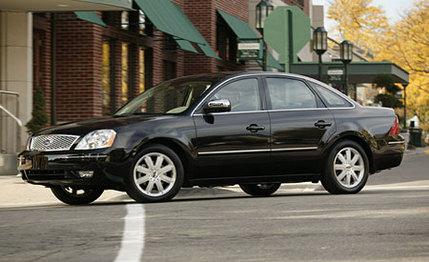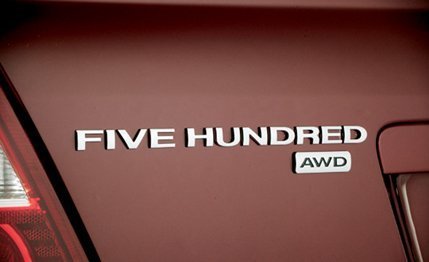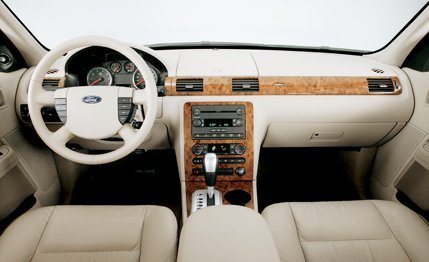 First Drive Review
First Drive Review

If you remember the Taurus when it was brand-new in 1986, you'll likely remember that it quickly became the turnaround trendsetter that changed Ford's fortunes forever. From that debut year through July 2004, Ford has sold 6.5 million of them, and the Taurus was the bestselling family sedan in the U.S. from 1992 through 1996. No small accomplishment in view of the slick competition from Japanese automakers.
Now comes the car that will inherit the flagship mantle and bear the enormous pressure of at least coming close to the popularity of the Taurus: the Ford Five Hundred.
The importance of this vehicle has caused Ford to rethink offering the traditional sedan/wagon formula of the past. The company has long been aware that the family-car market has moved from traditional wagons to SUVs—indeed, Ford's Explorer is the bestselling sport-ute in the country, and a highly profitable one at that. So the traditional wagon is out, and instead of a Five Hundred wagon, Ford is offering a car-based SUV—the Freestyle.

Ford is also hedging its bet, as the current Taurus will be sold side by side with this new Five Hundred. Just one of two factories where the Taurus was built gets the assignment for the Five Hundred.
A new car begins with a chassis, and instead of using the Taurus platform, Ford went upscale and plucked the P2 platform from Volvo, the Swedish automaker Ford has owned since 1999. This is the same front-drive, transverse-engine layout with struts up front and a multilink setup in the back that's used in all the bigger Volvos, from the S60 sedan to the XC90 sport-ute. Pulling such a premium platform down-market is most unusual.
This P2 platform uses the electronically controlled Haldex system that provides all-wheel drive on various Volvos, and Ford has carried this option over to the Five Hundred. This is a first for a Ford sedan, and on the Five Hundred, it's offered on any trim level as a stand-alone $1700 option.
With a meager engine cupboard, Ford finds itself in the unenviable position of offering only one engine for this family hauler: a not particularly powerful Duratec DOHC 3.0-liter V-6 (also the only engine for the Freestyle) that makes 203 horsepower, originally introduced in 1996 as a 2.5-liter in the Contour. In this iteration, the Duratec V-6 gets an electronic throttle and reduced LEV II emissions, managing three horsepower more than the 3.0-liter currently used in the Taurus and Escape.

Transferring power to the wheels are two transmissions. A first for Ford is a "gearless" continually variable transmission (CVT), which is found on entry-level SE front-drive models as well as on any all-wheel-drive Five Hundred. The other is a traditional six-speed automatic purchased from Aisin-Warner, longtime Toyota supplier, that is standard equipment on up-level two-wheel-drive SEL and Limited sedans.
When questioned about CVT durability—that issue killed GM's CVT—Ford engineers assured us that has been adequately addressed, and they expressed no additional concerns about having a CVT with all-wheel drive. The engineers point to the belt in GM's unit as the weak point and claim the Luk chain (the same supplier of Audi's chains) used in Ford's version will not cause problems. We hope they're right, because with every all-wheel-drive Five Hundred and all Freestyles teamed with the gearless box, Ford will soon be building more CVTs than anyone else. Any problems could turn off the public's acceptance of the CVT and spell disaster for Ford.
On the plus side, the CVT (and the six-speed) has a broad ratio span (highest gear ratio divided by lowest gear ratio, which is six for both transmissions), which can offset the lack of power. But we're not sure the driving public is prepared to accept wringing this engine out at its noisy power peak to achieve the so-so performance we experienced behind the wheel in a brief drive at the preview.